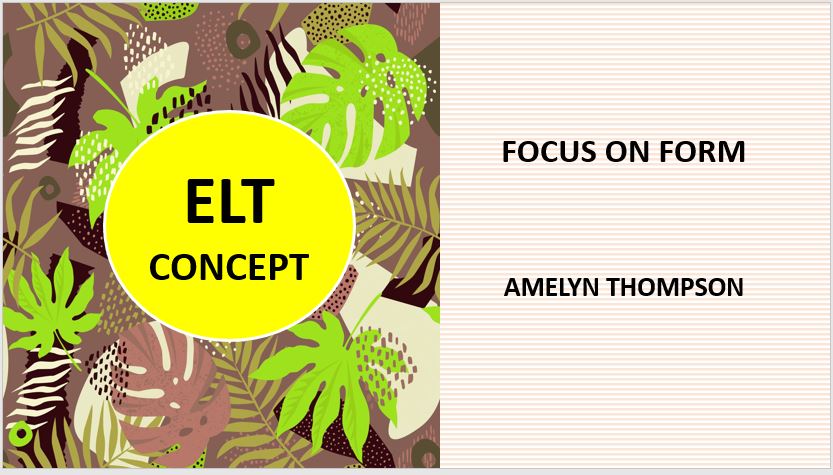Focus on form
Amelyn Thompson – 28 June 2021
What is it?
Focus on form aims to combine meaning and form to encourage explicit and implicit learning. However, the balance is hard to achieve. It can be either incidental or planned. Key issues include timing (immediate or delayed), and the initiator (the teacher or students). Focus on form research mainly hones in on grammar, although it encompasses various areas of language such as vocabulary, pronunciation, and pragmatics too. Types of focus on form include: input flood, input enhancement, consciousness raising, direct teaching, and corrective feedback.
Why is it important?
Generally, due to the high processing load of understanding or communicating in the L2, learners tend to prioritise semantic meaning over accurate form. Schmidt’s Noticing Hypothesis calls for awareness to be drawn to forms in order for acquisition to occur. Non-salient features (such as the plural ’s’ or third-person ’s’ in English) are notoriously ignored by students. Something must be done to enhance these non-salient features to allow for acquisition.
Reflection
I usually find it more comfortable to lean on the more traditional focus on forms method to introduce new grammar, because it is orderly and I can be sure to clearly present all the tricky bits. Following this, I get them to do communicative tasks that allow them to use the structures in self-relevant ways. However, this traditional present-practise-produce (PPP) method may not be effective as students may not be interested at the start.
Previously, I had the impression that focus on form takes more preparation. However, I realise that it can be more spontaneous as well. For instance, in one recent lesson, I chatted with students about their future plans. From the start, students were engaged as they wanted to know about each other’s ideas. I ignored errors and let everyone focus on semantic meaning first.
While listening, I typed their answers up onscreen, surreptitiously fitting them into the target structure (‘be going to’). I left out plans that were unsure or tentative. Finally, I asked them to look at the the text on the screen (which served as a kind of input flood) and notice the common structure. As input enhancement, I highlighted the relevant structure (in a different colour on the screen) along with them to make the structure more salient. Together, we picked apart the nuances, such as subject-verb agreement and the level of certainty. It was a more inductive, consciousness-raising approach.
I felt students were more engaged and there was more student and peer-initiated interaction. In fact, the weak students were able to ask and clarify key features without my having to ask concept-checking questions. Overall, it wasn’t as orderly as a focus on form lesson, but the students seemed more engaged and hopefully, noticed more as a result and had deeper processing, which would lead to better acquisition.
In the future, I will try to improve my grammar instruction by incorporating both form and meaning more closely, as research has shown both explicit and implicit instruction is helpful, with emphasis on the latter. This could be done in conjunction with interesting and authentic input (listening or reading texts, or real-life experiences from students).
For ELT Concept #2 – Interaction Hypothesis, click below.

